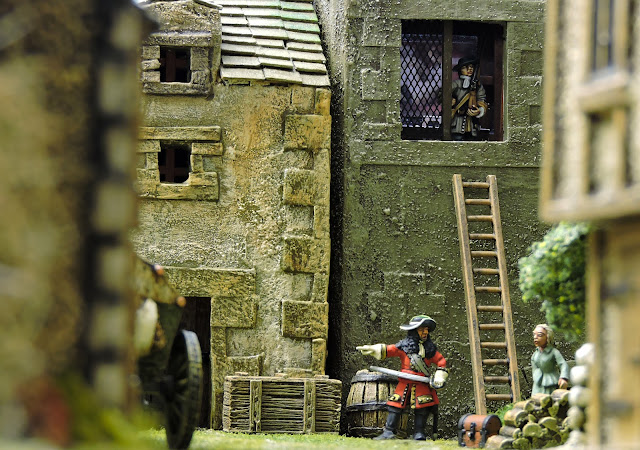 |
| Earl of Oxford's Regiment at Aughrim 1691 |
I have been writing about and gaming the War in Ireland for over thirty years and have accrued and published a considerable amount of collateral designed to provide gamers with the kind of info they need to get started. Despite this, I still have more stuff unpublished than published and aim to get the finger out in 2022 with some brand new and rebooted content.
 |
| Gard te Voet emerge from the Boyne River, July 1690 |
Having just found some space to catch my breath at the end of 2021 I thought I'd take a couple of post to reflect on the wargaming journey through the much (and often deliberately) misunderstood conflict between 1688 and 1691. I am doing this to provide the start of a new paragraph in terms of output and take stock of what we have already available.
 |
| Ferry gate, Derry/Londonderry 1688 |
The political background is complex and although I find that to be one of the most fascinating aspects it can be a little confusing particularly if gamers just want to get the troops on the table for a game.
 |
| Three companies of Protestant Militia at 1:1 model to man ratio |
By summarizing what attracted me to it we get a list of where other gamers might possibly get hooked:
 |
| Civil disorder - anywhere in Ireland! |
The conflict offers engagements from street brawls to pitched battles.
 |
| Marlborough lands near Cork 1690 |
The mixture of troop nationalities and selection of regiments is extremely interesting and attractive.
 |
| Part of the professional Danish expeditionary force |
The settings for the battles and skirmishes offer a wide variety of options on the table top.
 |
| Attacking Charles Fort Kinsale 1690 |
The characters on both sides retain cache even today.
 |
| King James and his advisors |
Collections are highly utilitarian and can be used in a wide variety of theatres beyond Ireland and the time frame 1688-1691.
 |
| English veterans of Ireland have moved on to the Caribbean 1692 |
Uniforms and flags are varied and attractive acting as a bridge between the early and late 17th centuries.
There is massive potential for campaign, role play, espionage, conflicted and conditional loyalty on both sides.
 |
| Escaping from Derry |
The connections to other theatres, powers and conflicts are legion.
 |
| Big war - Flanders |
This spontaneous list is enough to remind me of why I got sucked in as long ago as 1990. The fact that I live in a society in which the behavioural legacy of the age lingers on in attitudes and iconography acted as a further impetus to try and understand it all. I can't say I have totally bottomed out the reasons but I think my view is now informed and some aspects which I failed to understand as a young man are much clearer. It does take a lot of unpicking and more than anything an impartial attitude.
The long view also creates a better appreciation and I would go as far as to say empathy with the contemporary attitudes of both traditions born from the conflicts.
In part 2 I will summarize the available collateral

